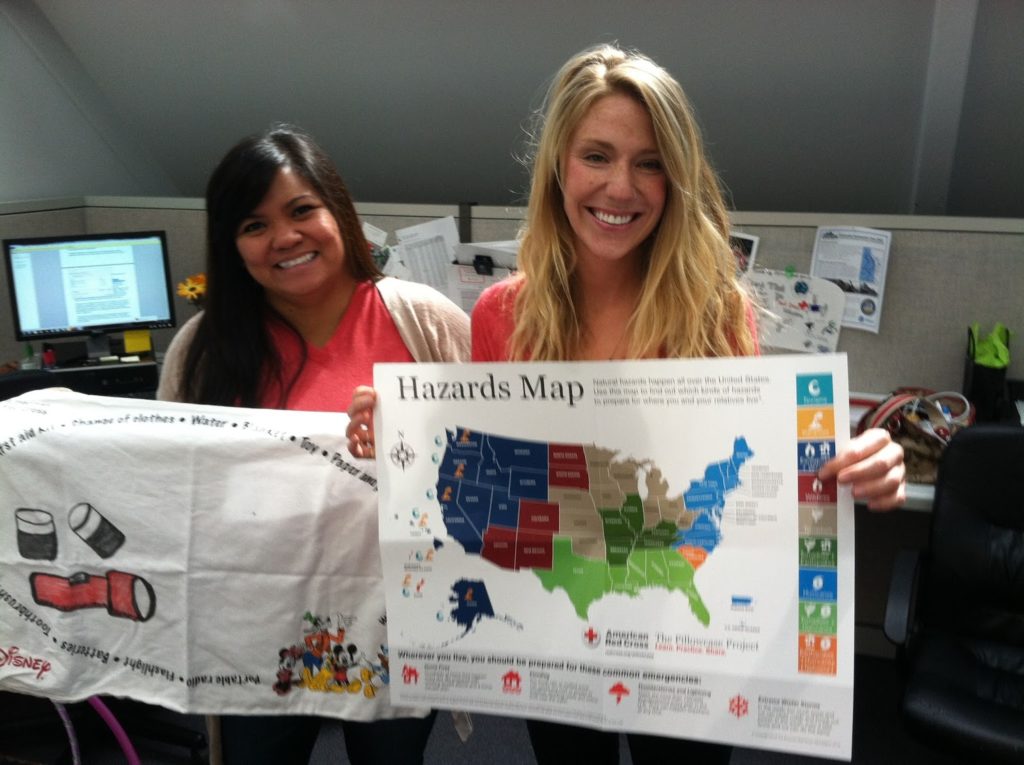Volunteer Profile: Shiela and Kelsey – AmeriCorps Preparedness Coordinators
In October 2014 two young, enthusiastic and very committed Red Cross
AmeriCorps service members, Shiela Peralta and Kelsey
Decker, were given responsibility for introducing school children in Portland
(grades three through five) to emergency preparedness. The program they
presented, called the Pillowcase Project, evolved out of the Red Cross
experience with Hurricane Katrina in 2005. During that disaster, college
students gathered their critical belongings together in pillowcases before
fleeing dorm rooms and brought these possessions with them to the Red Cross
shelter.
 |
| Shiela Peralta (left) and Kelsey Decker taught disaster preparedness to more than 8,000 students over the past year. |
engaging program that would teach students about personal and family
preparedness, local hazard, and basic coping skills. While the program focused
primarily on empowering young people to safely survive home fires and
earthquakes, the broader purpose was to prepare them to better handle any
disaster they might face. (These two disasters were selected because they
represented the most likely threat to families in our area.)
involved in the community and a chance to develop our skills as preparedness
coordinators. The project required us to learn the program, enlist the support
of teachers and school administrators, and present the training while fully engaging
the students attending. We served as the face of the Red Cross and as ambassadors for the many children
and adults unfamiliar with our organization.”
While the women were a bit overwhelmed initially by the challenge of
reaching at least 8,000 students, they gradually built the confidence and
ability needed to realize success.
“Besides introducing the program to a large audience, we also wanted
Oregon to be the most prepared state in the country. One of the most
challenging aspects of the program was getting teachers interested and securing
their approval to bring the program into their classrooms,” says Shiela. “We quickly learned that word-of-mouth was our
most powerful tool.” She also used her local connections as a native Portland
resident. “It helped get things started by first talking with people I already
knew.”
weather disasters, we realized students are ideal for introducing adults to the
program,” says Kelsey. “Students get excited about training that fully involves
them. Their enthusiasm transfers to parents who can share their children’s excitement.”
confronted with a disaster. Most kids were
quickly drawn in by the involvement designed into the program. Young people
became fully committed to the program, unlike the more reserved response we
often saw when presenting Disaster Preparedness to adults.”
building our own capabilities,” says Sheila. “As I worked to get students
enthused about the program, I became more excited. In the course of delivering
the program over a number of months, I found myself becoming more assertive, more
outgoing and better able to work with diverse audiences. This has been a great
experience and I am glad that I was able to contribute in such a meaningful way
to our community.”
As for Kelsey, “The experience enabled me to play a key role in
youth education,” she says. “This is one of my fundamental values and a goal in
any work that I do.”
To learn more about the AmeriCorps Program and the positions that are open accross Oregon, visit
Our Volunteer
Profile series offers a weekly look at some of the amazing volunteers who help
drive the American Red Cross mission forward. Approximately 1,700 volunteers in
the region serve as the backbone of our organization. This series is written by
our communications volunteer, Patrick Wilson.